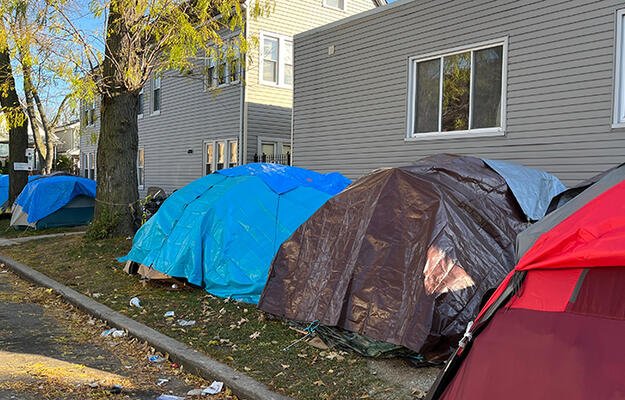
(EF Stock/Shutterstock)
Shelter-Based Interventions Can Increase School Attendance for Students Experiencing Homelessness
- Title:
-
Improving school attendance among homeless children: Evaluating the attendance matters program
- Author:
-
Dan Treglia, Michael Cassidy, Jay Bainbridge
- Source:
- Publication Date:
-
2023
Homelessness can contribute to adverse educational outcomes like higher rates of school absenteeism. Chronic absenteeism can have long-lasting detrimental effects for students’ learning, and students experiencing homelessness are disproportionately likely to miss school. This study evaluates whether a shelter-based intervention—the Attendance Matters (AM) program—increased school attendance for students experiencing homelessness.
The AM program was a cross-sector partnership between New York City’s Department of Homeless Services (DHS) and Department of Education (DOE), the Gateway Housing Development Corporation, and three shelter providers that aimed to increase school attendance for children living in shelters during the 2018–19 and 2019–20 school years. Attendance Matters targeted students in grades K–8 across five shelter sites and was structured around three main strategies:
- Coordination across agencies, which included the hiring of an external program leader who coordinated efforts across the DHS, DOE, and shelters to identify K–8 students with high absenteeism and address the causes of their poor school attendance.
- Use of data to identify students and track progress with daily updates on attendance for all DOE students living in participating shelters. These updates could be combined with assessments conducted by social workers in the shelters and family observations to identify progress or challenges with attendance.
- Training in evidence-based practices such as motivational interviewing and trauma-informed care that was implemented alongside workshops for AM staff on NYC education system basics, including student rights, availability of assistance, services for children with special needs, and discipline policies.
The authors of this study used administrative data from the NYC DHS to link the shelter data of school-age children to DOE school records to evaluate the effectiveness of the AM program in its first year. Two main measures, the number of days absent and absence rate over the full school year, were tracked for students living in one of the five AM shelter sites and compared with students staying in shelters that were not part of the AM program. Secondary measures, including changes in school stability—measured through changes in school enrollment—and academic proficiency on standardized tests, were also tracked.
Key findings
- The AM program had statistically significant positive effects on attendance for students living in participating shelters. Those in the AM program on average missed two to three fewer days of school and had absence rates about 1.5 percentage points lower than students living in shelters not in the AM program.
- Students participating in the AM program had increased school stability, with a decrease in their probability of changing schools between 2.5 and 7.4 percentage points.
- There were no significant gains in academic proficiency measures among AM participants compared with their peers in similar shelter situations.
Policy implications
- Although cost-benefit ratios were not calculated, similar collaborative systems-level interventions leveraging existing data and service infrastructures could improve school attendance among students experiencing homelessness.


